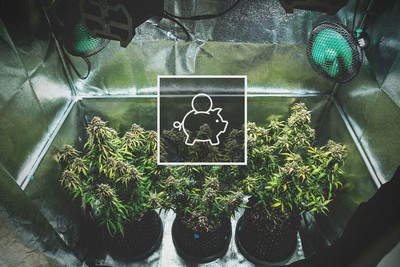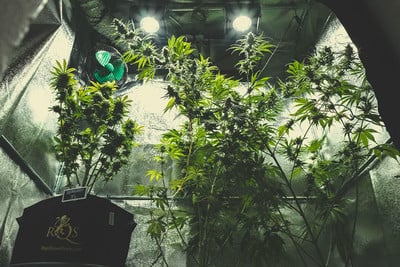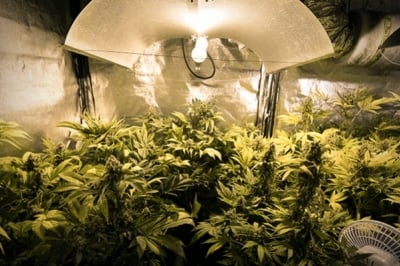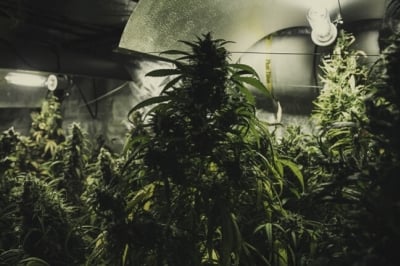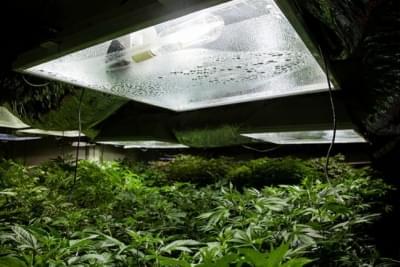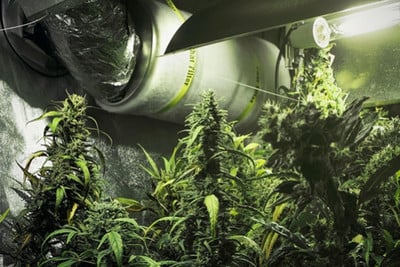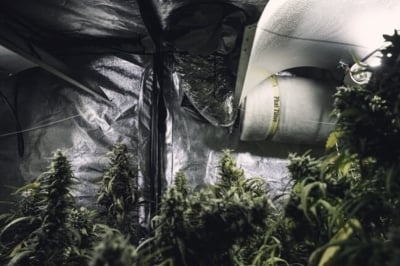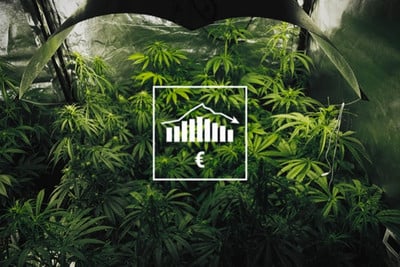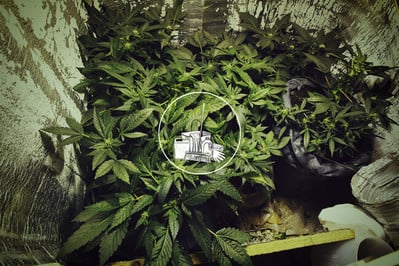.

The Importance Of Protecting Your Eyes In A Cannabis Grow Room
Cannabis grows best under intense lights, and growers pack as many watts as they can into their grow rooms to keep their plants happily producing dense, powerful buds with lots of resin. However, this is not a kind thing to do to your eyes. Find out how grow lights can damage your eyes and how you should protect your eyesight.
Cannabis plants love big, high-powered lights, and they thank you for increased lumens with bigger, sticker buds and higher THC levels. Unfortunately, that much light is not so good for the human eye.
Let's take a look at how different types of grow lights can affect your eyes and what steps you can take to protect your sight.
WHY SHOULD I WORRY ABOUT EYE DAMAGE?
Spending too much time under your grow lights could leave you with a headache or seeing spots. Perhaps you even feel a little dizzy from time to time. If you're like most people, you don't give it too much thought as long as you feel fine in an hour or two.
Unfortunately, the damage that strong lights cause to your eyes is cumulative and may not be noticeable for 15 years or more. By the time you can detect vision changes, it could be too late. Macular degeneration and cataracts are not usually diagnosed until most patients are past the age of 50.
In other cases, you might not have to wait long to discover you've permanently damaged your eyes. Looking into a grow light isn't too different from looking into the sun. Irreversible retinal damage can happen after just 100 seconds of direct exposure to sunlight.
Most people don't stand around staring directly into a grow light, just like they don't stare directly into the sun. But, staring into a sunset happens all the time, and that's similar to looking at the top of the plant canopy. In both cases, the ultraviolet (UV) light is scattered, so it doesn't cause the same kind of immediate discomfort as staring into the sun. However, our eyes often look in that direction for a longer period of time, and the same type of damage can happen.

METAL HALIDE (MH) LIGHTS
No other light, not even sunlight, showcases the natural beauty of a cannabis plant like a MH grow light. It looks clear to the naked eye and makes the colours pop, even when the plant is still in veg. But growers don't use metal halide lights because they're pretty, most use them because they produce the UV light that makes cannabis flowers form extra trichomes.
However, UV rays are terrible for your eyes. Humans need a little bit of UV light each day so our bodies can make vitamin D, but too much not only leads to skin cancer; it's the leading cause of macular degeneration and cataracts.
HIGH PRESSURE SODIUM (HPS) LIGHTS
For years, HPS grow lights were the gold standard for high-volume indoor growers. Growing under these lights is very efficient and yields more bud per watt on average than any other type of light. Your cannabis won't look as nice under these lights because they have a harsh, yellowish glare. The colour changes also make it hard to spot nutrient deficiencies or other problems. Growers continue to use these lights because nothing else matches them when it comes to tight, dense bud formation.
The yellow light that HPS lights produce is perfect for the flowering period because it's good for photosynthesis. But, the human eye doesn't process this light very well. While you're working under these lights, your eyes won't focus correctly. Not only does this mean our eyes take in way too much light, it can also cause headaches, dizziness, and both short and long-term problems with your vision.
Although HPS lights do not give off nearly as many UV rays as MH lights, they create enough to cause eye damage after prolonged exposure.
LIGHT EMITTING DIODE (LED) GROW LIGHTS
LED grow lights come in the blue spectrum for veg and the red spectrum for bloom as well as newer full-spectrum lights that can be used throughout the grow. They put off a pinkish-purple glow that gives your plants an artificial appearance, and they don't generate nearly as much heat as MH or HPS lights. Combined, this gives the grower a false impression that these lights are safer to the human eye.
This type of light is another big UV ray producer. Not only do LEDs emit UV-A and UV-B rays, but they also generate UV-C light. In the natural world, all UV-C light is absorbed by the Earth's atmosphere so we're never exposed to it. These rays are particularly harmful to our eyes and skin.
4 WAYS YOU CAN PROTECT YOUR EYES FROM LIGHT DAMAGE
WEAR SPECIAL GLASSES
Buy specialised glasses that will protect your eyes from all forms of UV light. They should also correct the light spectrum these intense lamps create so that you can see clearly while you tend to your plants.
Normal sunglasses aren't enough, and neither are the HPS glasses that correct for the yellow spectrum. Instead, purchase glasses made specifically for indoor growers.
TURN THE LIGHTS OFF
If you switch the high intensity lights off while you tend to your plants, it'll save your eyes from both short-term strain and long-term damage. If you need extra light to work by, hang a normal light that you can turn on and off as you enter and leave the room.
MOVE THE PLANTS
If you use a grow tent, pull out each plant, tend to it, then put it back in the tent. This will save your eyes and allow you to closely inspect your plant. It's too difficult to do with a ScrOG setup, but this will work with just about every other technique. If you grow in big pots that are heavy to move, use a wheeled plant caddy.
Moving the plants out of the tent to water and maintain has other advantages too; it'll minimise spills and reduce excess humidity inside the tent.
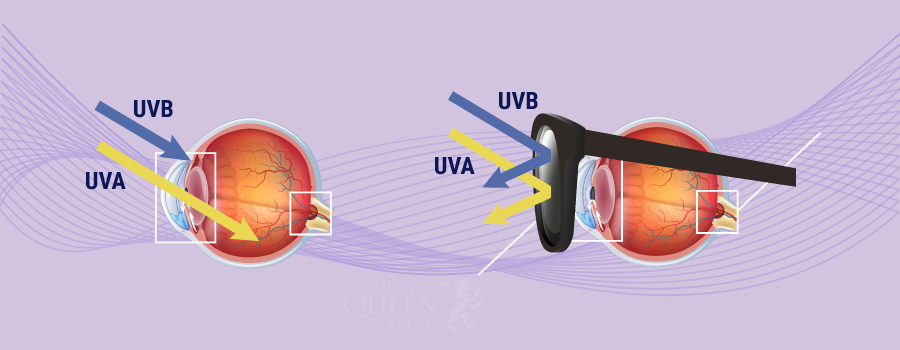
SEE YOUR EYE DOCTOR
Finally, see your eye doctor at least once a year. If you feel comfortable doing so, tell them that you're exposing your eyes to grow lights on a regular basis. They'll be able to monitor for vision changes and screen you for macular degeneration, cataracts, and other types of eye damage so that you can seek early treatment options if any are available.
SUMMARY: PROTECTING YOUR EYES IN THE GROW ROOM
Of all our senses, our sight is the one we value most. By taking the right precautions, you can protect your eyes from permanent damage while growing big, beautiful cannabis plants indoors. Combining a variety of safety measures with regular eye exams offers the highest level of protection.



























